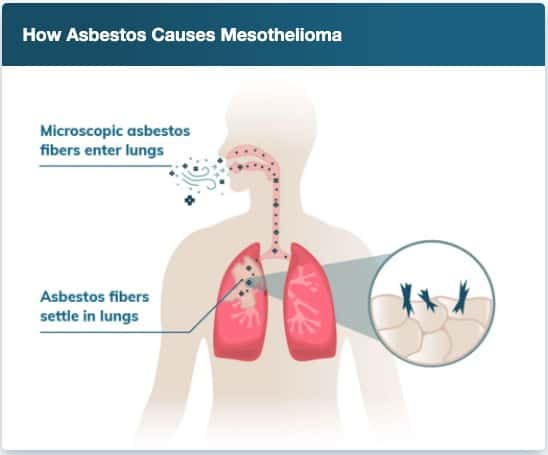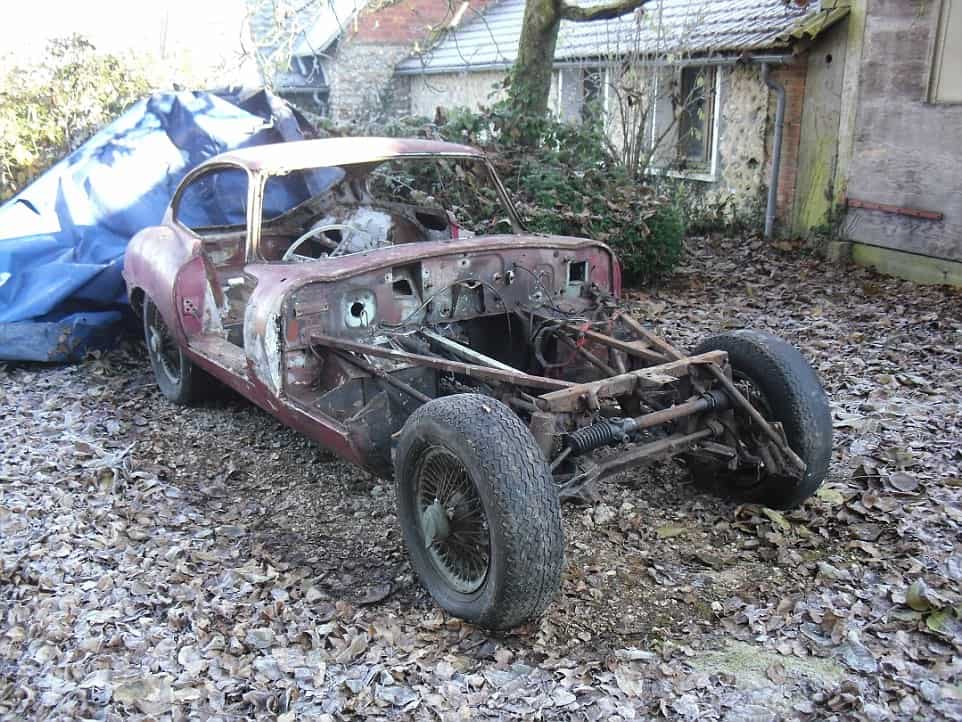You’ve finally found the classic car of your dreams. That Falcon Futura, a Corvette Stingray, the exact Shelby Mustang your dad had when you were a kid. You’ve done the research; you knew exactly what to look for and examined the car with white gloves. You trailered it home, backed it into the garage, and now you’re ready to tear into the restoration.
First things first, you need to remove all the rusted parts and old ripped up upholstery. But did you know that some of the parts and pieces could contain asbestos and pose a serious threat to you and your family?
Why did so many industries see benefit in Asbestos?
Asbestos has incredible rigidity and heat resistant qualities. This made it an excellent additive to improve the functionality and lifetime of mechanical components that are subject to great amounts of friction and extreme heat. Some of these parts include: Brake pads and linings, clutch discs, transmission parts, gaskets, valve rings and hood linings. Asbestos may be found in some fiberglass or plastic body work, and even under coatings as well. If restoring a vintage recreational vehicle, caution should be used if insulation is present too.
We know you’re eager to dig into your restoration project, but it’s important to be aware of the hazards that come with working on older vehicles. Take a moment to read up on the dangers of asbestos exposure and some of the old parts on your classic or vintage car where it could be hidden in plain sight. Not only for your safety, but for that of your loved ones, fellow enthusiasts, and mechanics alike.

What are The Dangers of Asbestos?
Asbestos was used in many products during the 20th century. From insulation to binding agents in concrete, few building materials went without asbestos as an additive. It wasn’t until the US passed a partial ban of asbestos in 1987 that new products containing asbestos were no longer allowed to be sold. While this was a stride toward preventing exposure from new products, asbestos is still a serious threat to those who work with products that utilized it at one time.
Asbestos is dangerous when friable. If the asbestos laced material becomes airborne, its microscopic fibers can easily be inhaled or ingested. Once in the body, asbestos can become lodged in the linings of the lungs, abdomen, or heart, where it can cause serious health problems. Exposure to asbestos can cause serious lung diseases such as mesothelioma, asbestosis, and lung cancer. Malignant mesothelioma has a latency period of 10-50 years leaving those exposed at risk for diagnosis years later. It can be difficult to pinpoint where and when an individual may have been exposed to asbestos. Playing it safe, knowing the dangers, and taking proper precautions to protect yourself is of utmost importance.

Occupational Risk In The Automotive Industry
With many automotive parts containing asbestos, mechanics and body shop technicians are at a higher risk for exposure when restoring or working on classic and vintage cars. Asbestos is used for its ability to resist heat in high friction parts on vehicles. This makes for a particularly dangerous situation for mechanics, due to the fact that these parts often create dust (from that continuous friction) which collects in brake drums and transmission housing. Asbestos is not in a friable form when parts are brand new. However, after years of abrasion, that seemingly miniscule amount of dust could easily be contaminated and become airborne when changing a clutch disc or brake shoes. The typical way to remove this dust is by using an air chuck or gun to blow out the drum or housing. This is a major problem for the mechanic performing the work and everyone in the vicinity as it may be blowing asbestos fibers around haphazardly.
If asbestos is suspected to be present, proper PPE should be worn and utilized. Mechanics should refrain from using a blow gun to remove any dust in brake drums or transmission housing, and a HEPA vacuum with a negative pressure attachment should be used instead. A normal shop vac shouldn’t be used. A paper dust mask is not sufficient in protecting one from asbestos, and a respirator should be worn when removing any dust. Wearing a tyvek suit for easy decontamination is important in mitigating secondhand exposure, too. The last thing anyone wants is to bring asbestos home to their family on work clothes. Restoration and service shops alike should be providing this equipment and proper training on its use for their employees.

The Risk For Enthusiasts and At Home Mechanics
A lack of knowledge or proper training could leave shade tree mechanics at an even greater risk. Not only can this be dangerous for the enthusiast. If you plan to restore a classic car at home, make the investment in the correct equipment. If you don’t have the proper respirators, HEPA vacuum, and decontamination area, you could be at a higher chance for exposure. If you don’t have this equipment and can’t invest in it, consider taking your classic to a professional for work like clutch replacement and brake removal.
Another issue for at home mechanics to consider is the disposal of this material. If an individual is unaware that asbestos is present and disposes of it through normal municipal systems, this could be dangerous for sanitation workers and the community. If you do remove asbestos on your classic car, make sure to bag the material with a minimum of .06 millimeter plastic. Federal guidelines require you to double bag the material once leaving your work area, too. You can find specific disposal locations in your area that take asbestos as well.
There are no federal regulations prohibiting asbestos removal in your own home, however not taking proper precautions is not worth the health risk. Here are some best practices from the EPA.
Asbestos and The Automotive Industry
Many parts were made with asbestos knowing full well the health risks that they posed. Manufacturers continued to use this material until the partial ban was passed, and companies still today are settling lawsuits for their role in exposing individuals to asbestos. We at classiccars.com certainly hope that mechanics and at home enthusiasts are doing everything they can to protect themselves against exposure.





